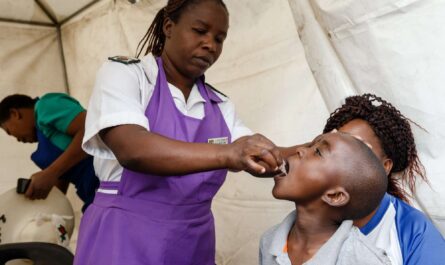Hodgkin’s lymphoma, otherwise known as Hodgkin’s disease, is a type of lymphoma, a cancer that develops in the lymphatic system. The lymphatic system is made up of lymph vessels and lymph nodes which help fight infection and disease. Hodgkin’s lymphoma most commonly affects lymph nodes in the neck, chest, or armpits but can also start in other body areas like the spleen and liver. While the causes of Hodgkin’s lymphoma are unknown, risk factors may include family history, infections like mononucleosis, and immunosuppression.
Staging Hodgkin’s Lymphoma
The first step in Hodgkin’s lymphoma treatment is staging the cancer to determine how far it has spread throughout the body. Staging involves physical exams, biopsies, blood tests, imaging scans like CT or PET scans. Hodgkin’s Lymphoma Treatment is staged I through IV, with higher numbers indicating more extensive disease. Accurate staging helps doctors select the most appropriate treatment options with the highest likelihood of success.
Treatment Options for Early Stage Hodgkin’s Lymphoma
For stages I and II Hodgkin’s Lymphoma Treatment typically starts with chemotherapy, radiation therapy, or a combination of the two. Chemotherapy uses drugs to kill cancer cells throughout the body. It is usually given in cycles over several months by IV, pills, or injection. Radiation therapy uses beams of high-energy particles like x-rays to kill cancer cells and shrink tumors. It is usually delivered 5 days a week over several weeks and affects only the lymphoma sites. For earliest stages, radiation alone may suffice but chemotherapy is often added for a higher chance of cure. Some early stage patients may be monitored closely without immediate treatment if they are low risk.
Treatment Options for Advanced Stage Hodgkin’s Lymphoma
For stages III and IV Hodgkin’s lymphoma, chemotherapy is the standard first-line treatment. ABVD is a common chemotherapy regimen used which includes drugs like doxorubicin, bleomycin, vinblastine, and dacarbazine. It is given in cycles over several months and effective at killing Hodgkin’s lymphoma cells. For higher risk or relapsed disease, more intensive chemotherapy may be used initially or after ABVD. High dose chemotherapy with stem cell transplantation can also be curative for some with relapsed or refractory Hodgkin’s lymphoma by delivering very high, intensive doses. Radiation may be added after chemotherapy to eliminate any remaining lymphoma cells in certain areas.
Side Effects and Managing Treatment Side Effects
While effective at treating Hodgkin’s lymphoma, chemotherapy and radiation do come with side effects that must be carefully managed. Common side effects of chemotherapy include fatigue, nausea, vomiting, hair loss, mouth sores, low blood cell counts, and increased risks of infections and bleeding. Radiation can cause skin redness, swelling, and fatigue in treated areas. Oncologists work closely with patients to prevent and treat side effects aggressively through medications, nutritional support, blood transfusions, and more. Managing side effects is important for adhering to ongoing treatment plans and having the best outcomes.
Outcomes and Follow Up After Hodgkin’s Lymphoma Treatment
With effective treatment, the 5-year survival rate for Hodgkin’s lymphoma is over 85%. Outcomes are better for earlier stage disease and often cured with initial therapy. Advanced stage patients may require additional therapies but many are still cured long term. After completion of treatment, patients start follow up care. This involves repeated physical exams and scans every few months at first to check for any signs of recurrence or late effects from treatment. As time passes with no evidence of disease, follow ups become less frequent but are lifelong to monitor for any long term impacts. With successful treatment and surveillance, many Hodgkin’s lymphoma survivors go on to have normal, active lives.
Hodgkin’s lymphoma is a highly treatable cancer when caught early or managed effectively. Staging guides appropriate treatment which commonly includes chemotherapy, radiation, stem cell transplant, or a combination based on disease factors. Careful management of side effects is critical. For most, long term survival can be achieved through initially Hodgkin’s lymphoma treatment and continued follow up care.
*Note:
1. Source: Coherent Market Insights, Public sources, Desk research
2. We have leveraged AI tools to mine information and compile it
About Author:
Ravina Pandya, Content Writer, has a strong foothold in the market research industry. She specializes in writing well-researched articles from different industries, including food and beverages, information and technology, healthcare, chemical and materials, etc. (https://www.linkedin.com/in/ravina-pandya-1a3984191)
About Author - Ravina Pandya
Ravina Pandya,a content writer, has a strong foothold in the market research industry. She specializes in writing well-researched articles from different industries, including food and beverages, information and technology, healthcare, chemicals and materials, etc. With an MBA in E-commerce, she has expertise in SEO-optimized content that resonates with industry professionals. LinkedIn Profile




